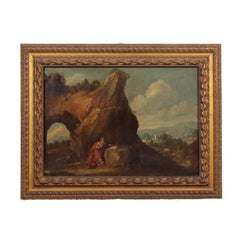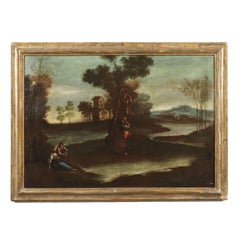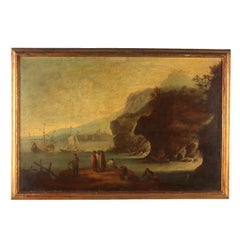Want more images or videos?
Request additional images or videos from the seller
1 of 15
Antonio De Simone 1Antonio De Simone Gouache On Paper, The Astrea Ship 19041900s
1900s
$4,094.23List Price
About the Item
- Creator:Antonio De Simone 1 (1851 - 1907, Italian)
- Creation Year:1900s
- Dimensions:Height: 26.38 in (67 cm)Width: 34.26 in (87 cm)Depth: 0.79 in (2 cm)
- Medium:
- Movement & Style:
- Period:
- Condition:
- Gallery Location:Milan, IT
- Reference Number:1stDibs: LU68037925512
About the Seller
4.8
Vetted Professional Seller
Every seller passes strict standards for authenticity and reliability
Established in 2017
1stDibs seller since 2017
126 sales on 1stDibs
Typical response time: 3 hours
Authenticity Guarantee
In the unlikely event there’s an issue with an item’s authenticity, contact us within 1 year for a full refund. DetailsMoney-Back Guarantee
If your item is not as described, is damaged in transit, or does not arrive, contact us within 7 days for a full refund. Details24-Hour Cancellation
You have a 24-hour grace period in which to reconsider your purchase, with no questions asked.Vetted Professional Sellers
Our world-class sellers must adhere to strict standards for service and quality, maintaining the integrity of our listings.Price-Match Guarantee
If you find that a seller listed the same item for a lower price elsewhere, we’ll match it.Trusted Global Delivery
Our best-in-class carrier network provides specialized shipping options worldwide, including custom delivery.You May Also Like
Contemporary British Abstract Original Painting
Located in Cirencester, Gloucestershire
Abstract Composition
by Sally Vaughan (contemporary)
gouache painting on card, unframed
measurements: 9 x 11 inches
condition: very good
provenance: from a large private collection ...
Category
1990s Abstract Abstract Paintings
Materials
Gouache
Contemporary British Abstract Original Painting Pink Interior Colourful
Located in Cirencester, Gloucestershire
Abstract Composition
by Sally Vaughan (contemporary)
gouache painting on card, unframed
measurements: 6 x 6 inches
condition: very good
provenance: from ...
Category
1990s Abstract Abstract Paintings
Materials
Gouache
Contemporary British Abstract Original Painting Surrealist Landscape
Located in Cirencester, Gloucestershire
Abstract Composition
by Sally Vaughan (contemporary)
gouache painting on card, unframed
measurements: 9 x 8 inches
condition: very good
provenance: from a large private collection o...
Category
1990s Abstract Abstract Paintings
Materials
Gouache
Contemporary British Abstract Original Painting Fantasy Web Screen Landscape
Located in Cirencester, Gloucestershire
Abstract Composition
by Sally Vaughan (contemporary)
gouache painting on card, unframed
measurements: 8 x 5 inches
condition: very good
provenance: from ...
Category
1990s Abstract Abstract Paintings
Materials
Gouache
Contemporary British Abstract Original Painting
Located in Cirencester, Gloucestershire
Abstract Composition
by Sally Vaughan (contemporary)
gouache painting on card, unframed
measurements: 8.75 x 6.75 inches
condition: very good
provenance: from a large private collec...
Category
1990s Abstract Abstract Paintings
Materials
Gouache
Contemporary British Abstract Original Painting Purple Coral Wacky Landscape
Located in Cirencester, Gloucestershire
Abstract Composition
by Sally Vaughan (contemporary)
gouache painting on card, unframed
measurements: 6 x 6.75 inches
condition: very good
provenance: fr...
Category
1990s Abstract Abstract Paintings
Materials
Gouache
Contemporary British Abstract Original Painting Flowers Butterfly Landscape
Located in Cirencester, Gloucestershire
Abstract Composition
signed by Sally Vaughan (contemporary)
gouache painting on card, unframed
measurements: 9.25 x 10 inches
condition: very good
provenance: from a large private c...
Category
1990s Abstract Abstract Paintings
Materials
Gouache
Contemporary British Abstract Original Painting Flame Sunset
Located in Cirencester, Gloucestershire
Abstract Composition
by Sally Vaughan (contemporary)
gouache painting on card, unframed
measurements: 6 x 7 inches
condition: very good
provenance: from ...
Category
1990s Abstract Abstract Paintings
Materials
Gouache
Contemporary British Original Painting Space Planet Scene Abstract
Located in Cirencester, Gloucestershire
Abstract Composition
by Sally Vaughan (contemporary)
gouache painting on card, unframed
measurements: 9.5 x 8 inches
condition: very good
provenance: fro...
Category
1990s Abstract Abstract Paintings
Materials
Gouache
Moody Abstract Urban Blue and Grey Landscape with Architectural Sketches
Located in Cirencester, Gloucestershire
Moody Abstract Urban Landscape
watercolor/gouache painting on artist paper
painting: 12.75 x 9.75 inches
provenance: private collection, England
condition: very good and sound condit...
Category
20th Century Abstract Abstract Drawings and Watercolors
Materials
Watercolor, Ballpoint Pen, Gouache
$514
H 12.75 in W 9.75 in D 1 in
More From This Seller
View AllWoodland Landscape with Figures 1883
Located in Milan, IT
Oil on Canvas. Signed and dated bottom right.
The landscape sees a stream flowing within a shady coniferous forest; two young boys try their hand at fishing, using rural tools. The a...
Category
19th Century Other Art Style Landscape Paintings
Materials
Oil
Landscape with the penitent St. Jerome, XVIIth - XVIIIth century
Located in Milan, IT
Oil painting on canvas. Northern Italian school of the 17th-18th century. In a large, rather barren hilly landscape, which widens and fades to the right, there is a high rock, shaped...
Category
Late 17th Century Other Art Style Landscape Paintings
Materials
Oil
Painting Landscape with Figures, 18th century
Located in Milan, IT
Oil on Canvas. North Italian school of the 18th century.
The landscape, set on the bank of a wide river, features several figures of peasants in the center intent on picking fruit fr...
Category
18th Century Other Art Style Landscape Paintings
Materials
Oil
Seascape with Figures Oil on canvas '700
Located in Milan, IT
Oil on Canvas.
The coastal foreshortening, near a rocky inlet where torrential waters flow, sees figures at the landing of ships, ready to welcome the approaching boats; in the dis...
Category
18th Century Other Art Style Landscape Paintings
Materials
Oil
Landscape Painting with Figures and Herds, XVIIIth century
Located in Milan, IT
Oil painting on canvas. Italian school of the eighteenth century. Within a rather barren landscape, with architectural ruins on the left and snow-capped peaks in the background on the right, some shepherds pass along the path, leading their flocks of cows, sheep and goats. In the Nordic landscape...
Category
18th Century Other Art Style Landscape Paintings
Materials
Oil
Landscape painting with figures, XVIIIth century
Located in Milan, IT
Oil painting on canvas. Central European school of the eighteenth century. Under a blue sky, a large, rather barren landscape is depicted, with the edge of a wood opening onto a rock...
Category
18th Century Other Art Style Landscape Paintings
Materials
Oil
Recently Viewed
View AllMore Ways To Browse
De Simone Painting
Antonio De Simone
Low Country Art
Maple Tree Painting
Marine Art Scottish
Marine Sailing Ships
Mark Rohrig
Mel Gibson
Michael Wright
Miniature Dutch Painting
Mont St Michel
Napoleonic Wars Painting
Nathan Hale
Niek Van Der Plas
Nighttime Oil Painting
Northwest Impressionist
Norwich School Paintings
Oil Painting Bahamas


